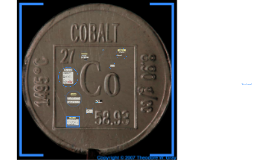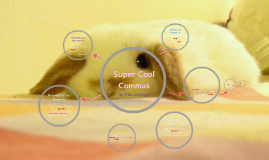Super Cool Cobalt Poison Powerpoint
Transcript: Works Cited Magnets Tires Metal Hip Implants Examples of Cobalt Poisoning Cobalt Cobalt is a chemical element. For millennia it has been used for jewelry and decoration. It can also be used to tint windows and give metals a blue color when mixed. Not only was it used for building reasons, it was used to make paints. This form of cobalt poisoning is the most severe. Industrial activities such as drilling and polishing can release cobalt particles into the air. This could lead to various chronic lung problems such as asthma. Treatment However the problems that do result from cobalt poisoning are rarely reversible and often require lifelong medical care. Outlook Symptoms of Cobalt Poisoning Where It's Found Definition: a method that is used to achieve the removal of waste products from the blood when the kidneys are in a state of renal failure. Hemodialysis Marlon Haygood 2A Makira Bonham Steven Milicia http://www.nlm.nih.gov/medlineplus/ency/article/002495.htm http://www.drugwatch.com/hip-replacement/metallosis/ http://www.rightdiagnosis.com/c/cobalt_poisoning/intro.htm http://articles.latimes.com/2014/feb/07/science/la-sci-sn-dr-house-tv-cracks-cobalt-case-20140207 Poisoning Through Inhalation This is a less worrisome form of cobalt poisoning. Contact will cause irritation, discoloration, and rashes, that will fade over time. Lasting Affects Poisoning Trough Ingestion Treatment -55 Year old man diagnosed with Cobalt Poisoning was "saved" by the show 'House'. The doctors operating on the man were unsure how to go about the operation. Some of the doctors were reminded of an episode of the TV series, which prompted them to order a radiograph to find signs of metal debris. Blood tests showed concentrations of Cobalt 1,000x higher than normal. If cobalt has made extensive contact with your skin, a topical cream may be prescribed. If inhaled, treatments to reduce swelling in the lungs will be utilized, and x-rays may be taken. If swallowed, doctors will conduct blood tests to see if the patient's blood has been affected. If so, hemodialysis will be performed, and medications will be given. Swallowing a large amount of cobalt at once is rare and not very dangerous, causing only nausea and vomiting. However, ingesting a large amount over long periods of time can lead to serious health conditions such as thickening of the blood, cardiomyopathy, and thyroid problems. People exposed on a single occasion usually recover, experiencing no long term complications. Cobalt is commonly found in: A case in "The New England Journal of Medicine" documented a 59-year-old woman who, after receiving a left and right hip replacement, began experiencing a cough, shortness of breath, and fatigue years later. Throughout the next year she was misdiagnosed and her symptoms worsened as she develop cataracts and hypothyroidism. After undergoing hip imaging, both prostheses were replaced, alleviating her symptoms. Poisoning Through Contact Cobalt Poisoning Alloys Batteries Dyes In most cases, one has to be exposed to high levels of cobalt over a long period of time to develop symptoms. However, symptoms may also occur if a large amount of the metal is ingested at once. Death Asthma Nodular Fibrosis Permanent Disability Literally Death

















